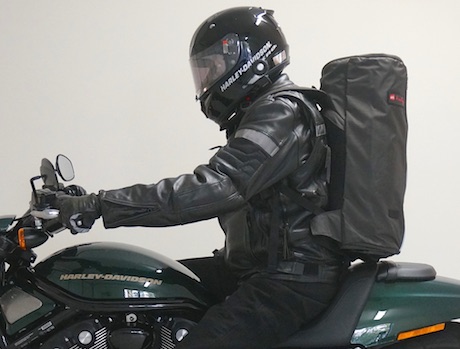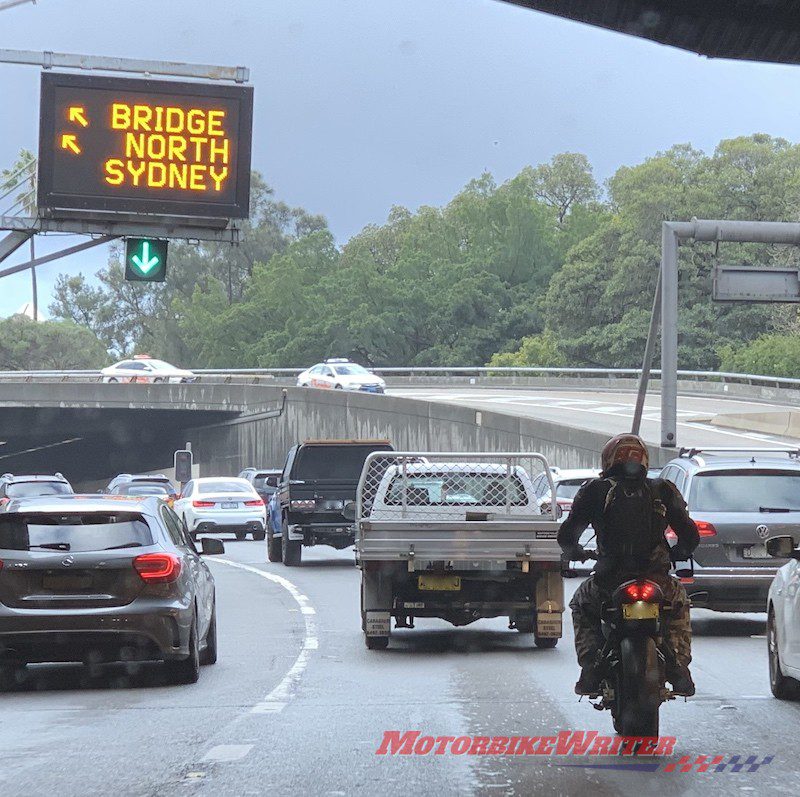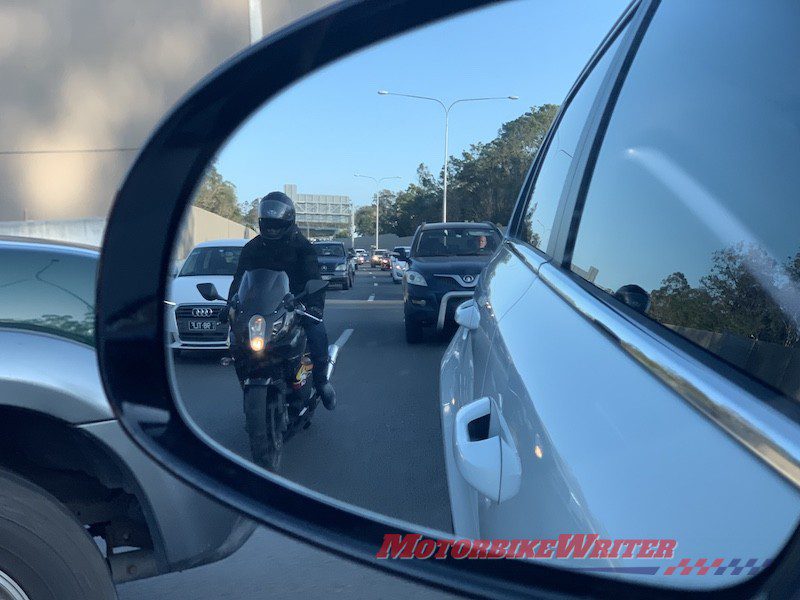Commuting to work is one legitimate way to ride and avoid the pandemic lockdown and travel bans, yet some riders are either scared for their safety or find it inconvenient.
Motorcycle commuting is not only fun and challenging, but also handy for parking, faster than cars because of lane filtering and more convenient than public transport.
Commuting safety
However, many riders find the biggest drawback is safety.
Commuting traffic is fraught with danger from inattentive motorists on the phone, eating breakfast, getting dressed, putting on lipstick, reading the paper, changing channels on the radio or Spotify … anything but paying attention to riders.
Peak hour radio traffic reports frequently include motorcycle crashes involving cars, buses and trucks.
Riders can be understandably concerned.
So here are five safety tips for riding in heavy traffic:
- Ride as if you can’t be seen. Move around in your lane, try to stay out of blind spots, blow the horn or blip your throttle to alert drivers and wear something bright.
- Look at indicators and drivers for their intention to suddenly change lanes. They don’t always indicate, but you can sometimes see them move the steering wheel or their head as if they are about to swap lanes.
- Filter to the front of traffic at the lights, stay in gear with the clutch in and plan your exit route in case you hear screeching tyres behind you!
- Avoid filtering next to or around trucks and buses as they have limited visibility of small riders.
- Practise slow and balanced riding in a deserted carpark at the weekend, slipping the clutch, using the rear brake, keeping your head up and your eyes forward.
Inconvenient truth

Even those who are confident in traffic may find commuting inconvenient because of the weather or because they have to wear a suit, well-ironed dress or carry a laptop and other gear.
So here are five tips to get around motorcycle commuting inconveniences:
- Fit panniers, top box and/or tank/tail bag to carry a change of clothes and gear such as a laptop;
- If not, then invest in a really strong but lightweight backpack (some even fold out like a suit carrier);
- If you are lucky enough to be able to shower at work, leave a towel and a couple of changes of clothes at work;
- Invest in high-quality airflow gear and carry a change of clothes;
- Invest in a high quality rain suit or separate waterproof jacket and pants that overlap.



